We had seen pictures of Cala Murta before our trip to Mallorca – and we knew it was a remote, natural beach hidden away and only accessible by walking a forested mountain-side trail.
It sounded like just the type of place we love to visit – and a welcome change from the busier, more mainstream tourist beaches on the island.
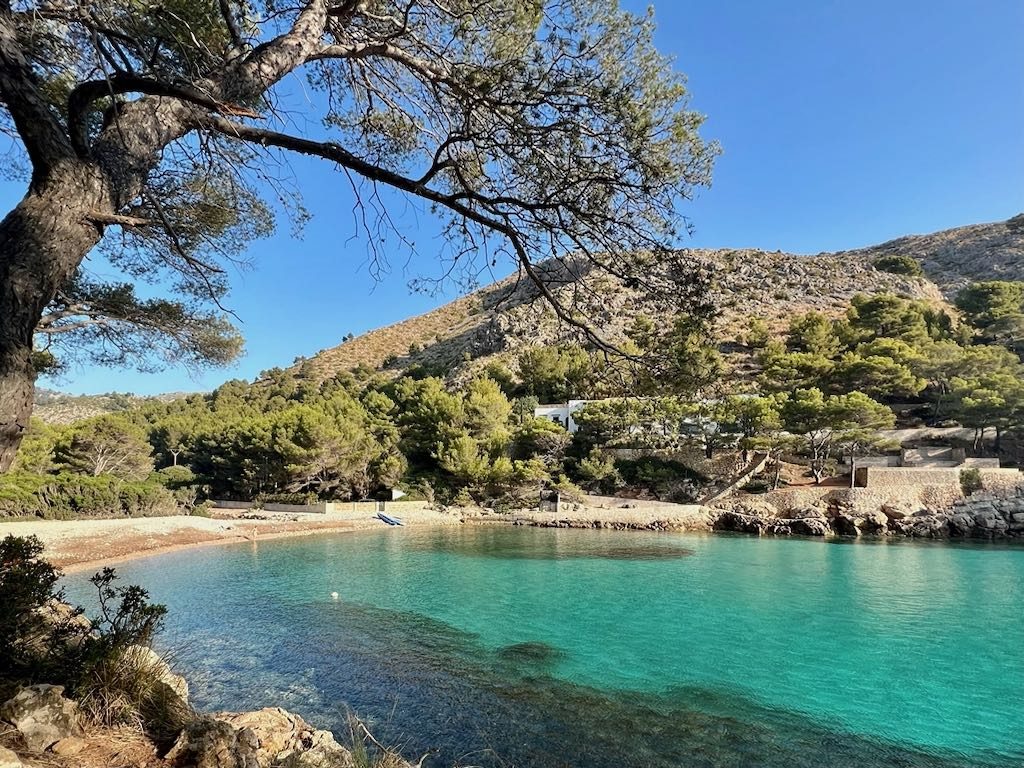
However, getting to Cala Murta turned out to be a bit more complicated than we first realised – so if you want to know how to find Cala Murta, read on…
On Google Maps, Cala Murta looks easy enough to locate. It appears you can navigate there by car – although this didn’t turn out to be the case.
We were staying in Pollenca – which showed as being about 45-minute drive to Cala Murta, through the spectacular mountains of the Formentor peninsula, right at the northern tip of Mallorca.
The drive quickly became stunning, as we wound our way up the road into the mountains, with wide, clear views of Alcudia and Pollenca opening up behind us, and incredible views of the high cliff faces plunging into the deep blue sea below, as the mountains and the sea meet in dramatic fashion.
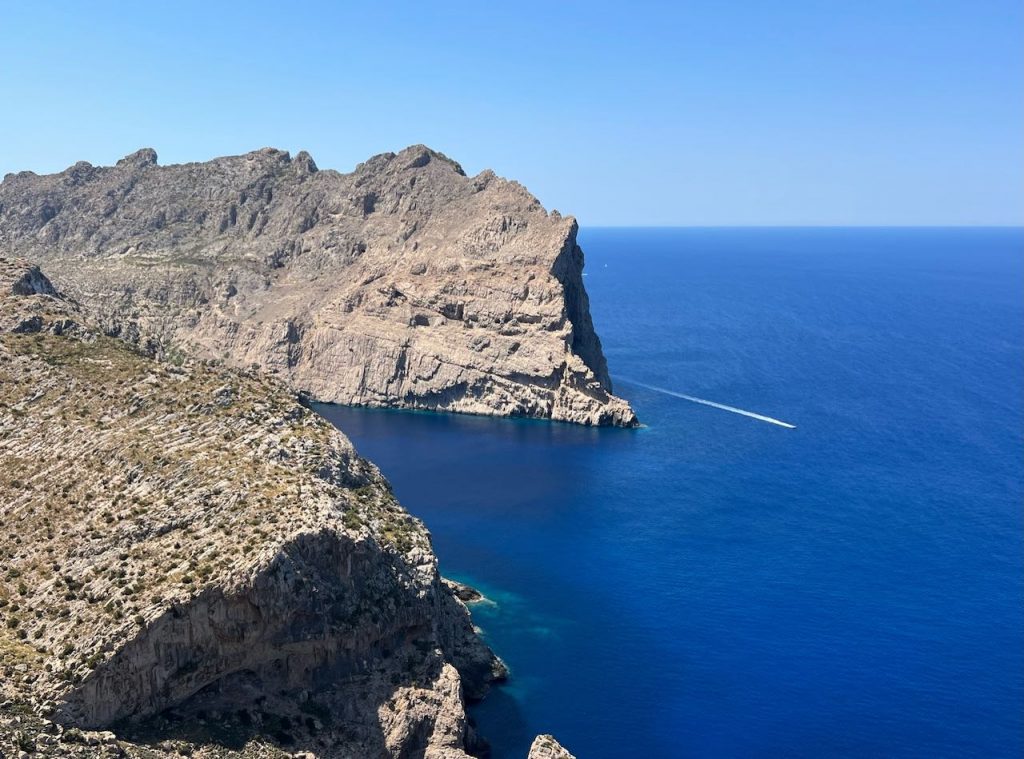
However, to our surprise, about 15-minutes away from our planned destination, there was a barrier placed across the road, manned by people diverting us into a car park for Formentor beach – and a sign saying the road beyond was closed between 10am and 10pm.
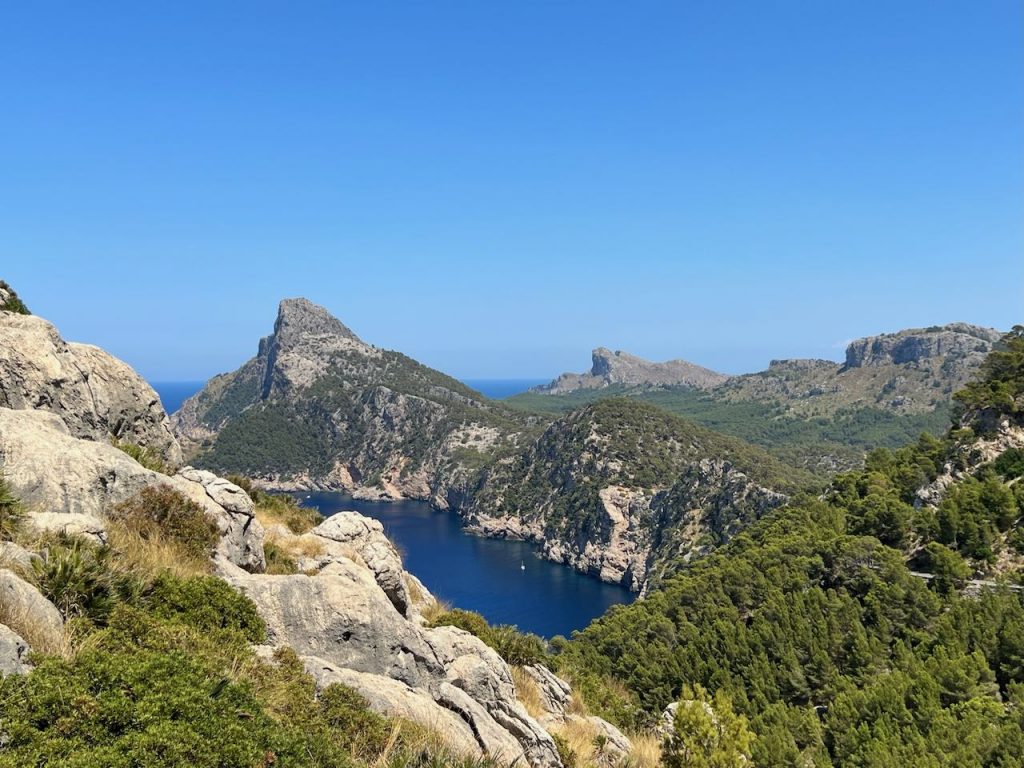
We were told that the road beyond here – which goes all the way to the famous ‘Cap Formentor’ lighthouse at Mallorca’s most northerly point – was only accessible by bus in the summer peak season.
So we parked in the car park and queued for the bus, which came roughly every 20-minutes or so – only to be joined by increasing numbers of people queueing for the same bus.
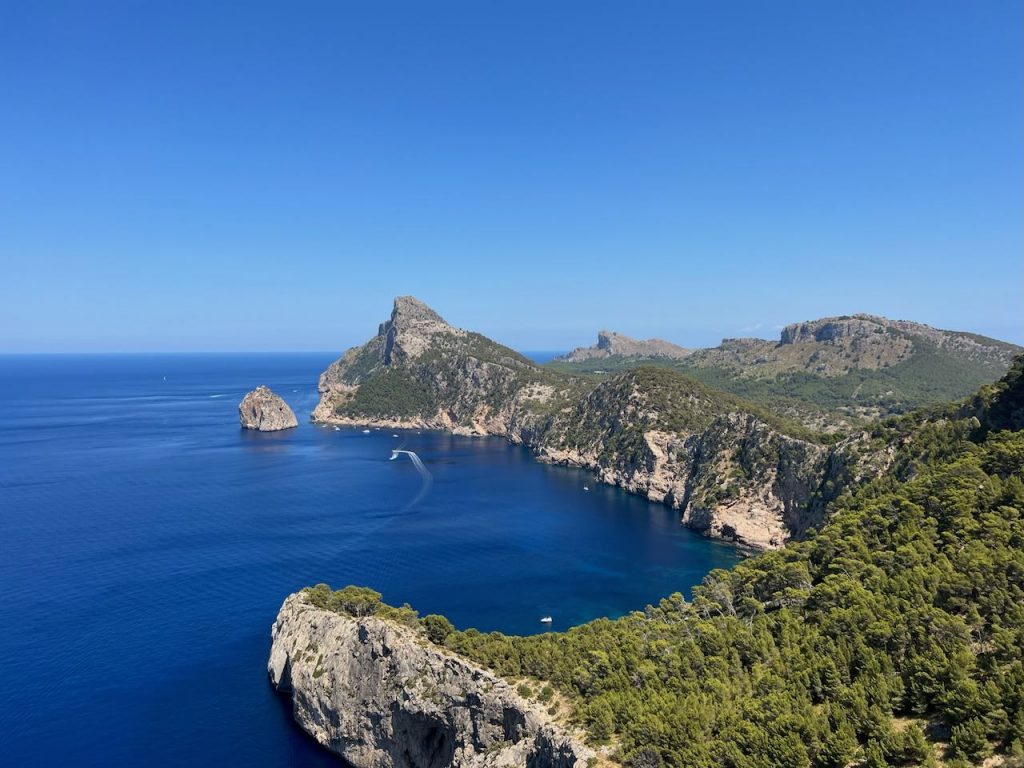
Eventually the familiar red and yellow ‘TIB’ bus appeared, which had come all the way from Alcudia, but it was already full.
The driver allowed a small handful of people on (which didn’t include us) and headed off.
So we waited for the next bus and, sure enough – the same. ‘Bus Completa’ on the front and no space for anyone to board it at this point.
By this point we’d been stood for over half-an-hour in the boiling hot midday sun, the crowd at the bus stop getting even bigger, so we decided to abandon our planned trip to Cala Murta and walked the 100m or so to Platja de Formentor beach and spent the rest of the afternoon there instead.
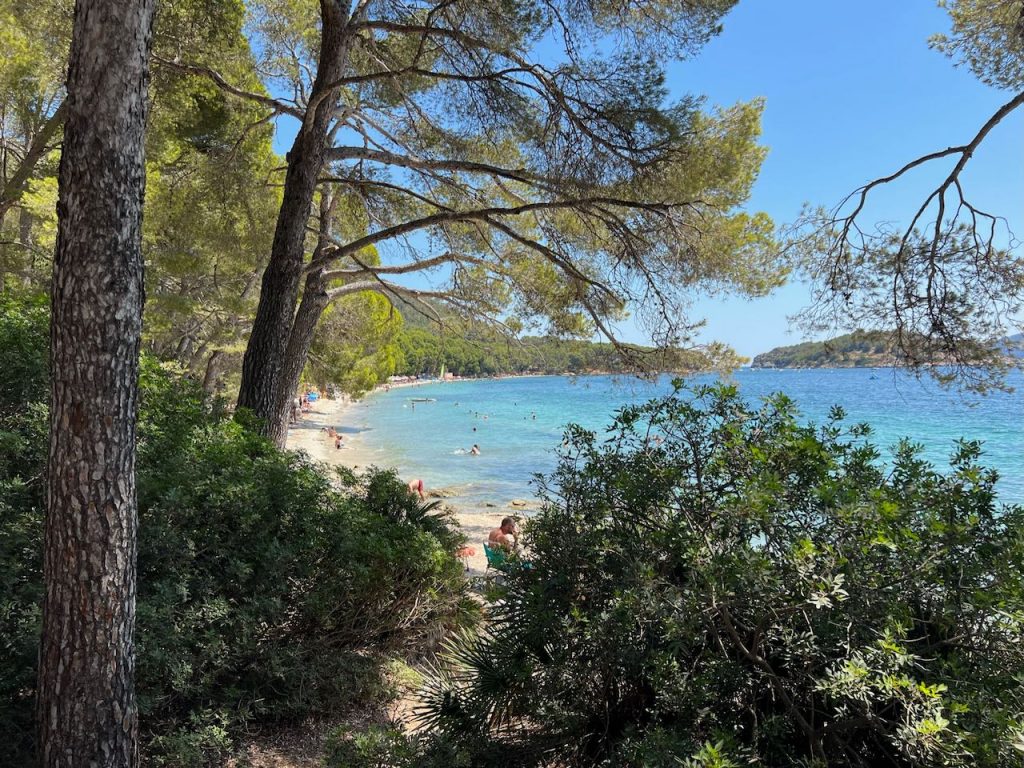
Formentor beach is beautiful – with green pine trees providing shaded areas and typical crystal clear blue, warm water and soft white sand.
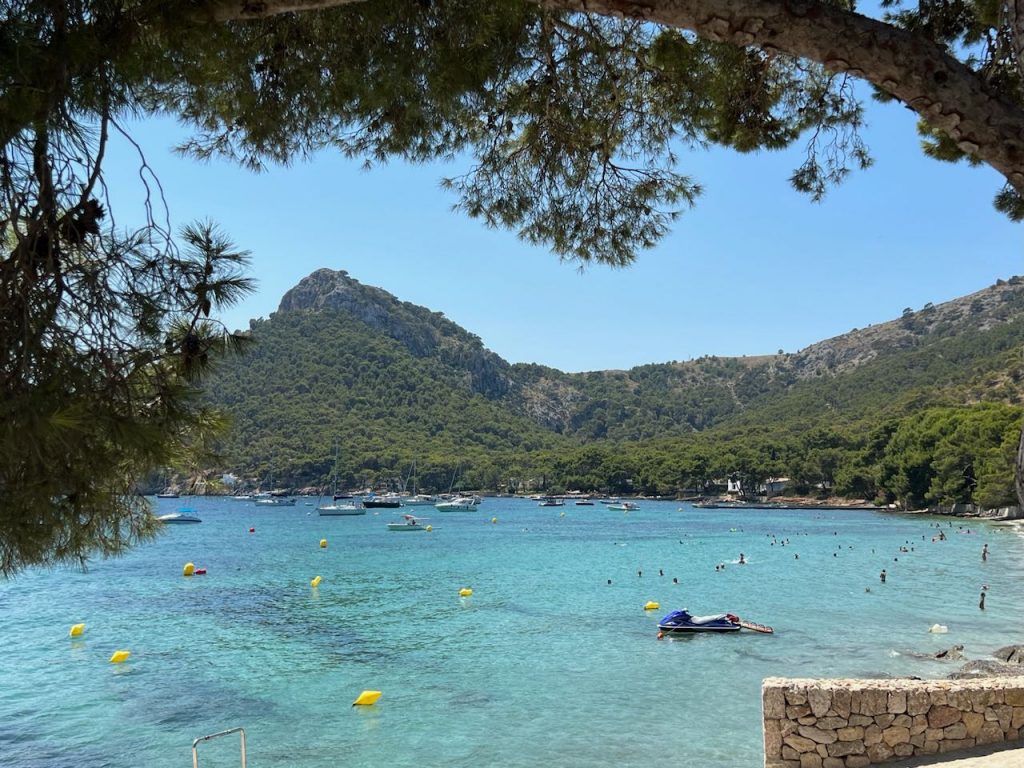
There is also a large restaurant / cafe and beach shop and we loved the beach and exploring the area around it – but it wasn’t the hidden, remote natural beach we’d come looking for, so we felt disappointed at missing out on that experience at Cala Murta.
So we came up with a plan to try to beat the crowds and the road block, by returning the next day early in the morning.
Finding Cala Murta
We set our alarms for 6am the next day (not a popular decision with the children) and were out of our villa in Pollenca and on the road again to Cala Murta by 7am.
This time we reached Formentor beach car park, where we’d encountered the road block the previous day, to find the road open and clear and virtually no other cars or tourists in sight.
The road block at Formentor takes effect from 10am during the high season – but, as long as you’re through it by that time, you can return back the other way at any time.
As the drive continued, we began to realise why they shut this road to avoid large numbers of tourists driving here.
It becomes increasingly narrow and winding, as it works its way through the mountains towards Cap Formentor and isn’t the sort of road you want clogged up with thousands of tourists in their hire cars looking for parking spots (which don’t exist).
I believe, incidentally, that the vast majority of those catching the bus here are headed for Cap Formentor and not for Cala Murta, because Cala Murta itself takes quite a bit of effort to get to, with about a 2km hike through a forest.
Our Google Maps satnav told us we’d reached our destination in a random spot on the mountain road, with no sign of Cala Murta to be seen.
This is because you need to park on the roadside and find a fairly well-hidden footpath from the roadside to walk through the forest to reach the beach itself.
If you follow Google Maps directions to here:
https://goo.gl/maps/mxxwQxF61PfawGp48
you’ll find yourself close to the nearest point that it’s possible to drive to – but there are very few places to stop the car on the narrow mountain road.
Luckily at this time of day, the road was virtually deserted and there was a small, gravel lay-by with space for about three vehicles that we parked in.
If you find yourself driving through a tunnel (called Tunel Rocoso), you’ve gone too far and need to turn around and find the signs for Cala Figuera, close to which you’ll find a wooden sign (on the other side of the road) for Cala Murta.
We headed off down the woodland trail and soon encountered a big herd of donkeys blocking our path!
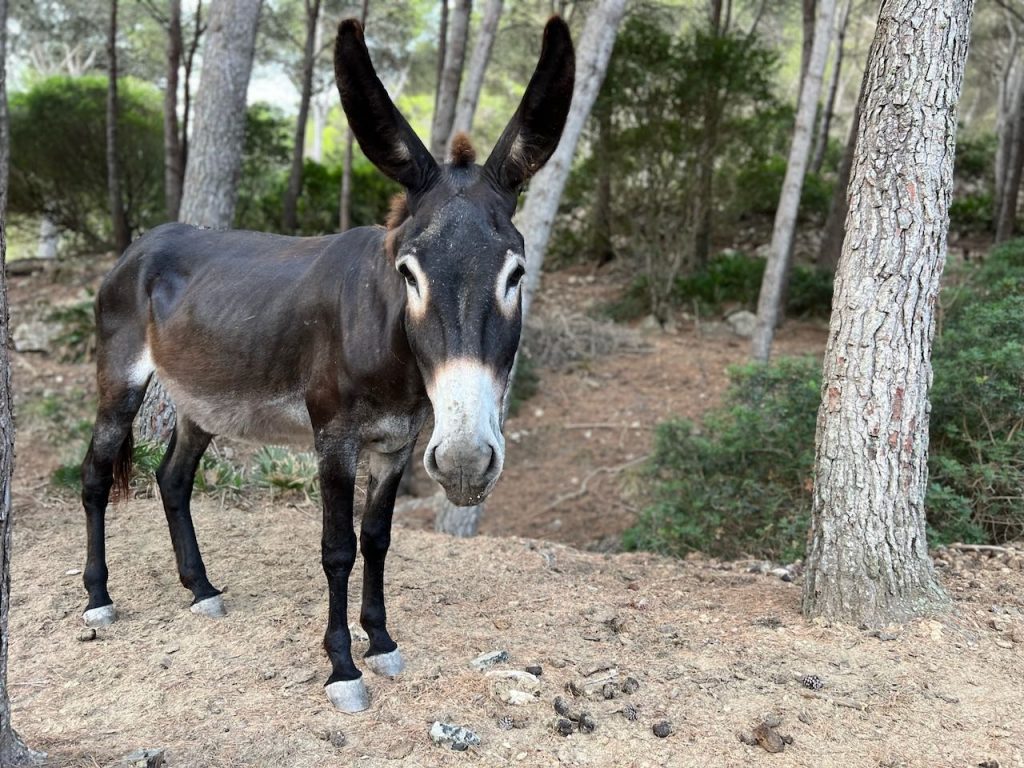
They were very friendly and seemed interested in whether we had any food with us for them (which we didn’t) but they didn’t give us any trouble as we continued to wind our way down the trail towards the beach.
It’s not a rough, mountain trail – it’s a pretty well made path through woodland and we measured it at about 2km from where we’d parked the car until we arrived at our destination.
And how glad we were that we’d made the effort to come back again after the previous day’s aborted visit.
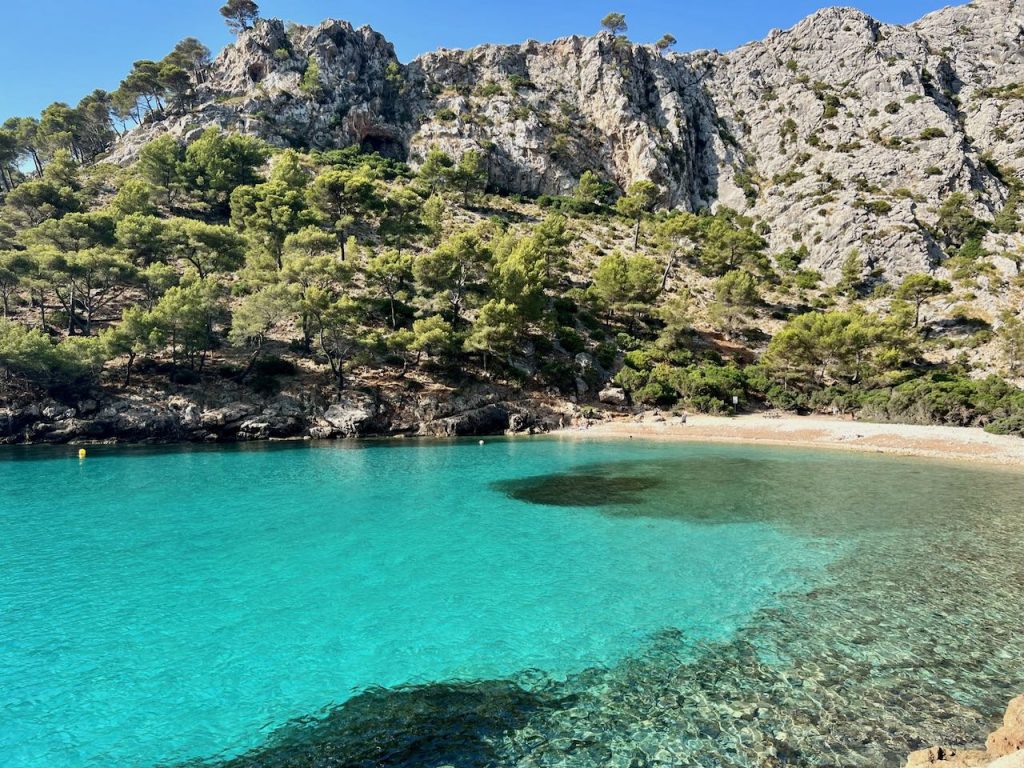
We were greeted by one of the most beautiful beaches we’ve seen, which would only be bettered later on in the holiday by Calo des Moro in the south of Mallorca.
At 8am, we were the only ones here apart from one family that had appeared to have camped at the beach overnight and were packing up a tent and loading it onto a boat.
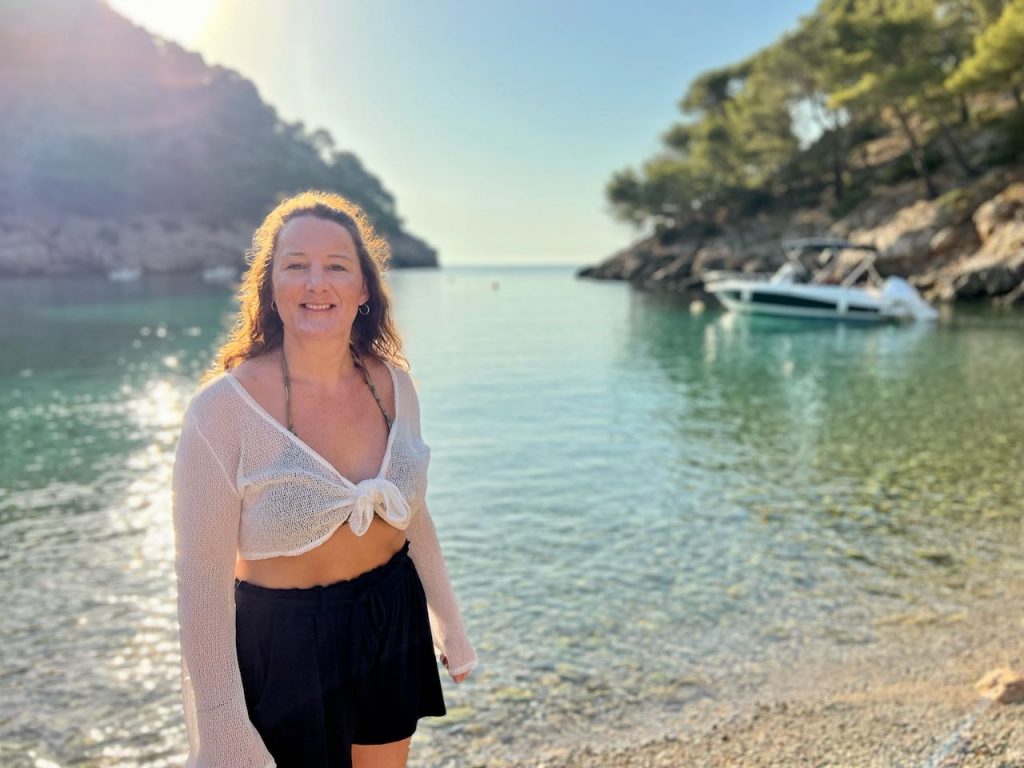
It was serene, peaceful and beautiful – with pine forests and cliffs to the side, which you can climb up into for even better views of the cove and its insanely clear, blue water.
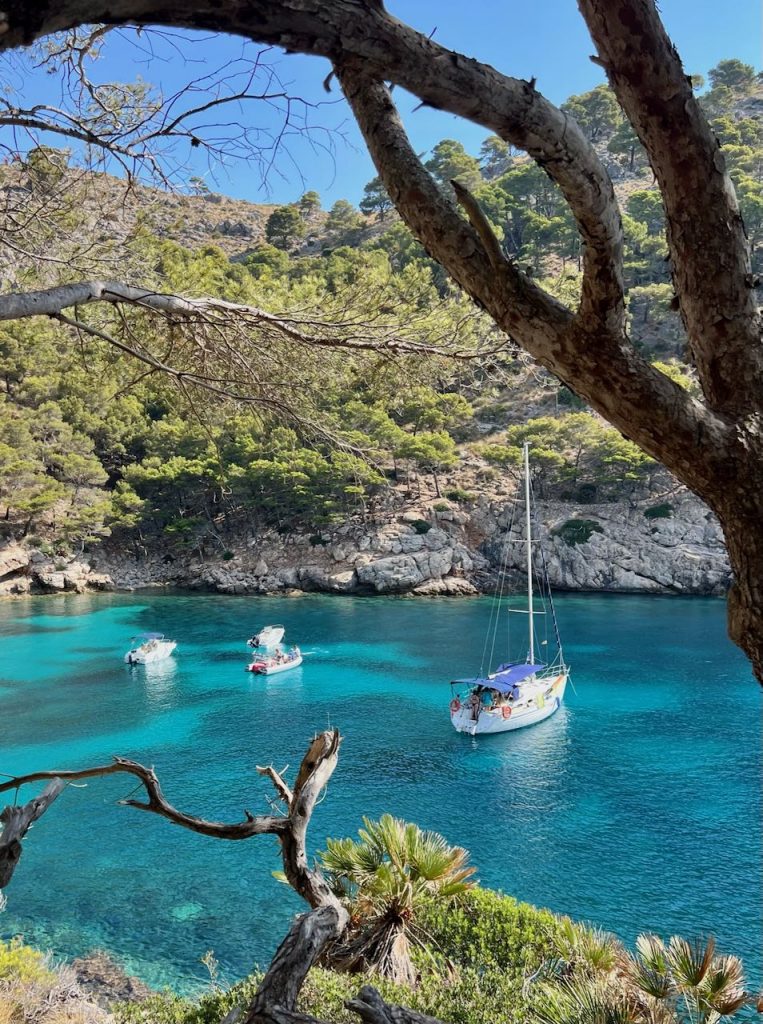
The beach itself is stony – but with small pebbles its still comfortable to sit on – and the water is amazing.
And being here with so few other people, as the sun rose in the sky early in the morning was a pretty magical experience.
The drive and the hike and the early start were all well, well worth it.
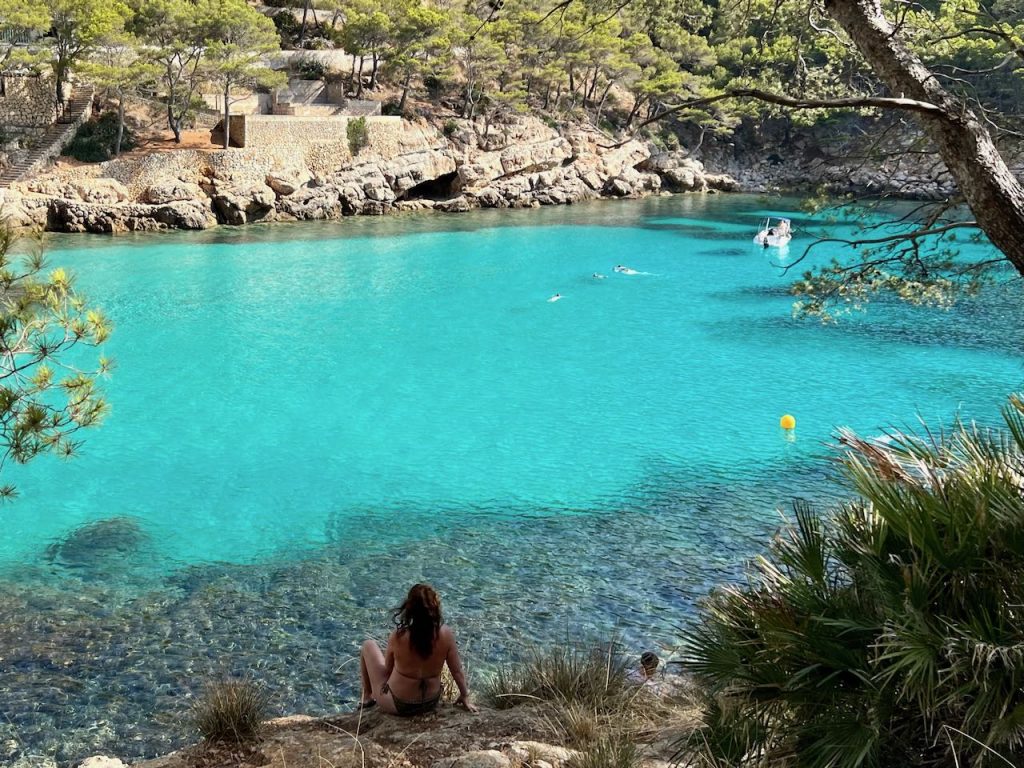
Gradually more people began to arrive as the morning wore on, but most of them had the right idea and arrived in the cala by boat.
That is undoubtedly the best way to experience Cala Murta – without the hassle of driving and parking and walking.
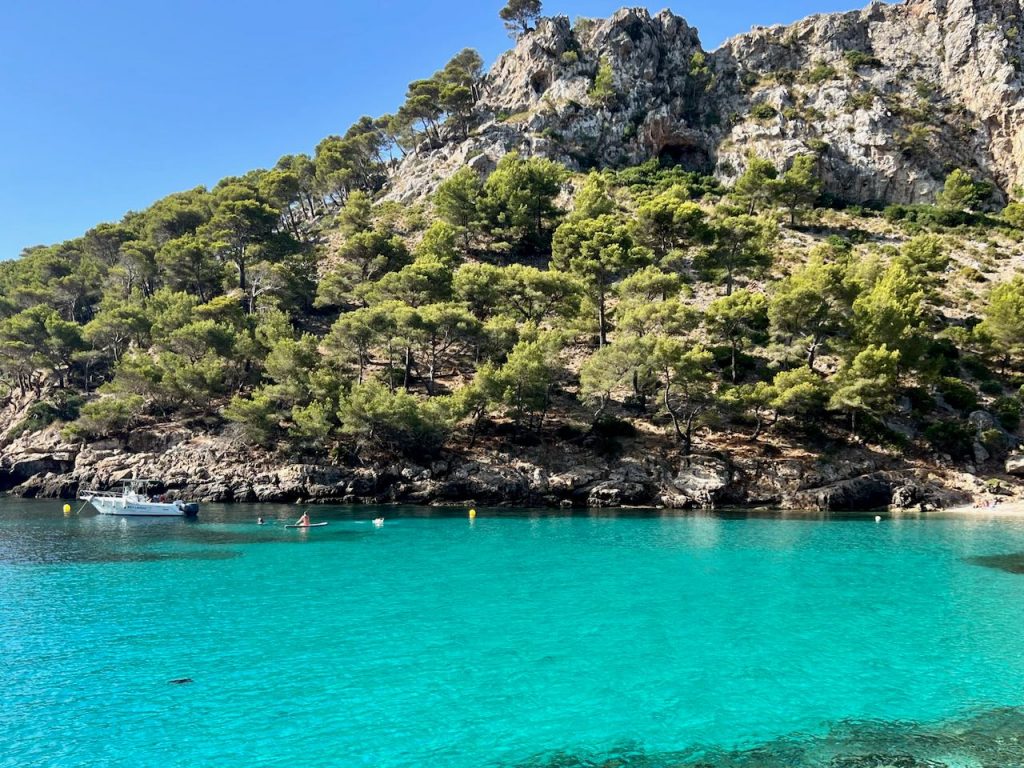
We had our snorkelling gear with us and it’s a perfect place for seeing tons of fish beneath you in the clear water – including, while we were here, a large sting ray (which we weren’t entirely sure it was safe to be close to, so we kept our distance!)
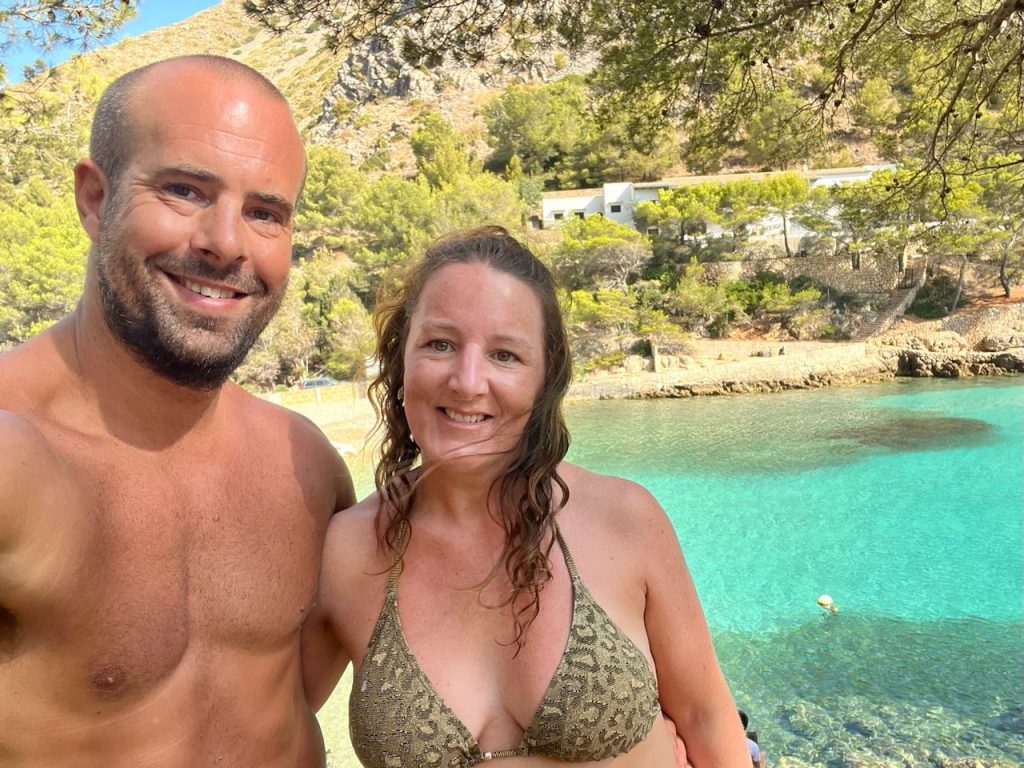
Eventually we decided it was time to head back to the villa for lunch. A few people had turned up at the beach by this time, but it was by no means busy.
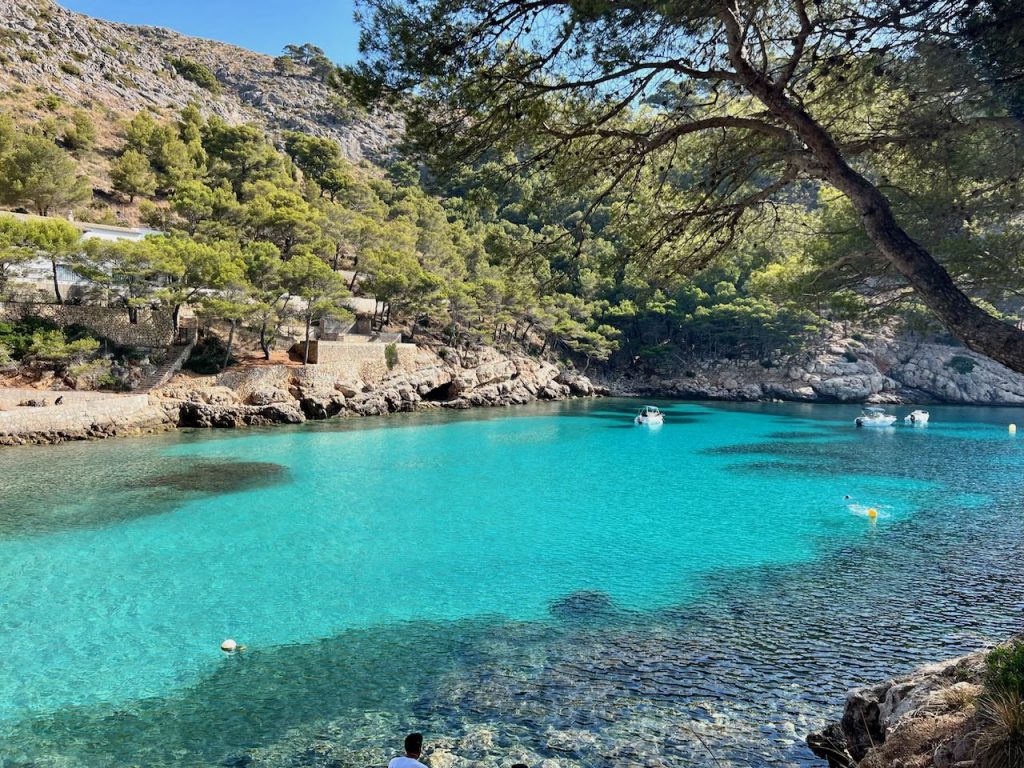
The walk back up through the forest took more effort than the walk down, as this time you’re uphill and with the full heat of the day – it certainly wasn’t an easy trek back, but it was absolutely well worth the effort.
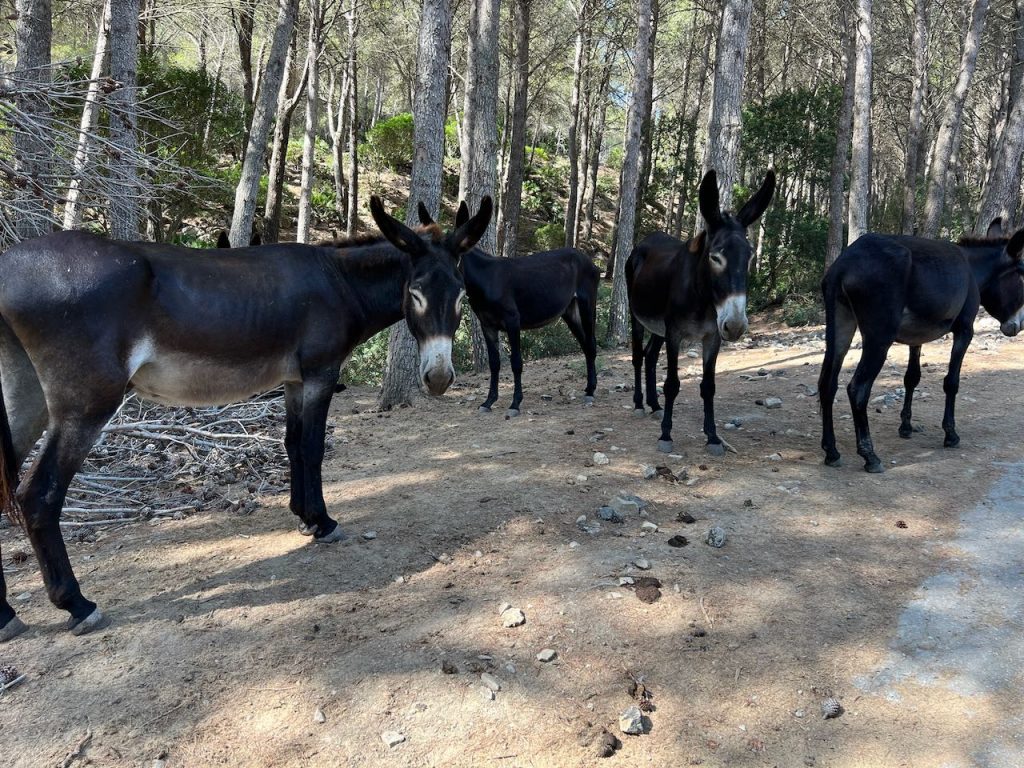
On the drive back, we reached the point where the road block was and the man moved the barrier to let us through.
The traffic in the other direction, heading from Pollenca / Alcudia to the car park for Formentor Beach (and the subsequent bus trip to Cap Formentor or Cala Murta) was absolutely gridlocked.
Because there’s only one road in and out of here – and it’s literally blocked with a barrier after 10am – you either have to go into the Formentor beach car park, or turn around and go back again.
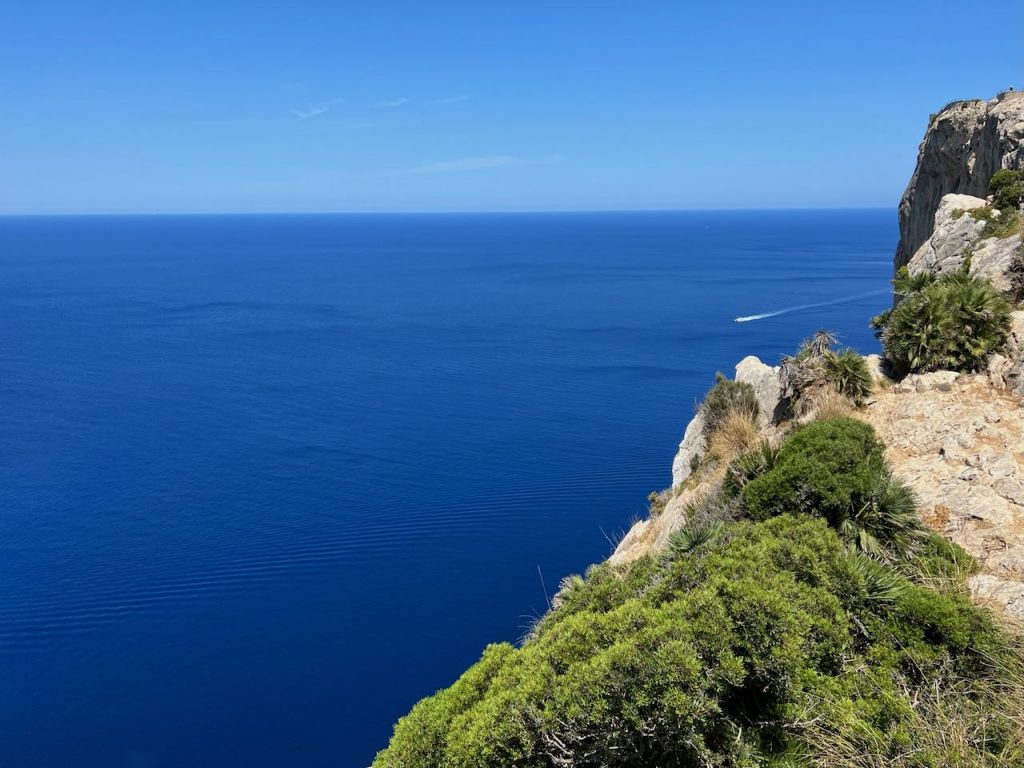
So it’s one car out, one car in – which caused long, long queues which are impossible to escape from on such a narrow, winding road.
We were here in peak summer holiday season, and no doubt outside of this time it’s much more accessible by car and quieter.
But if you’re trying to find Cala Murta, or the nearby Formentor beach, Cap Formentor or Cala Figuera, we’d strongly recommend coming early in the morning and avoiding the traffic chaos that builds later in the day.
And it’s very well worth doing so as Cala Murta itself – and the drive through the mountains on the Formentor peninsula – are both well worth experiencing and had some of the most beautiful natural sights we saw on our entire trip to Mallorca.
Useful info:
Google Maps link to the closest point to Cala Murta that you can drive to:
https://goo.gl/maps/mxxwQxF61PfawGp48
Google Maps link to the car park and bus stop at Formentor Beach – the closest point you can get to Cala Murta after 10am during peak season:
https://goo.gl/maps/sPX2FUscvSmTqX2y7
